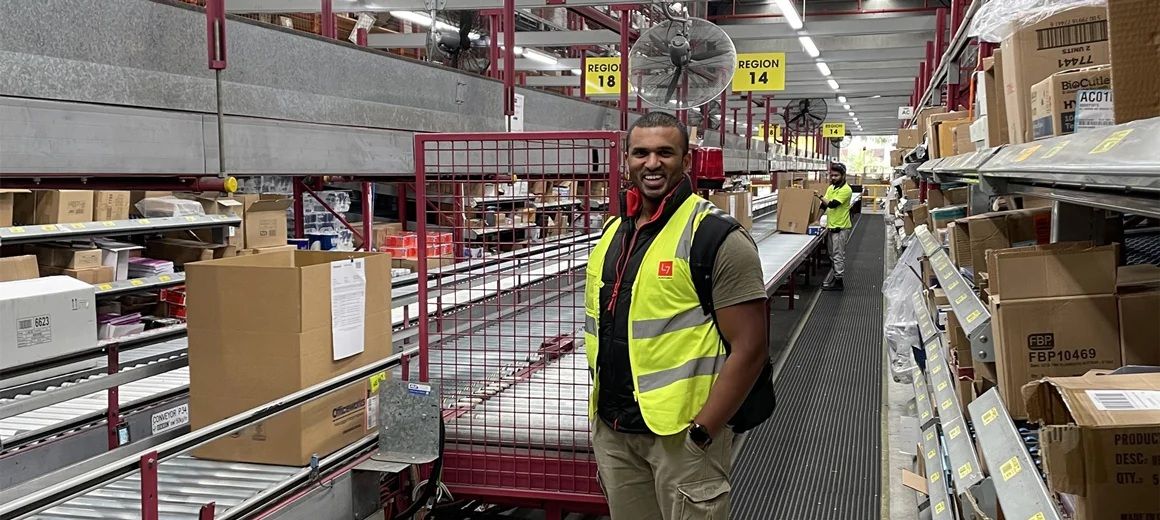Beckhoff Automation Retrofits Conveyor Technology Control System
For every online retailer, warehouse logistics is part of the critical infrastructure: If the conveyor lines come to a standstill, it generally won’t be possible for any more packages to get out. To prevent this, an Australian office equipment supplier has retrofitted the warehouse logistics installation of its central warehouse. In its role as project manager, Layer Seven Automation replaced the proprietary decentralized controllers of the conveyor lines with PC-based control from Beckhoff, based on powerful EtherCAT communication.
The end user is one of Australia’s leading office equipment suppliers, with a broad portfolio ranging from office supplies and computers to office furniture. The company operates more than 100 stores across Australia as well as an online store with more than 40,000 products. At main distribution center, the stored goods are removed from shelves and packed into boxes, then transported along various conveyor lines – with a total length of 700 m and 28 distribution stations – and prepared for dispatch.
The conveyor lines had operated reliably for many years, but it had become apparent that the systems were reaching the end of their service life. Malfunctions were occurring more and more frequently, and the required spare parts had become increasingly difficult to obtain and more expensive due to the age of the system. As a result, the management of the office equipment supplier commissioned Layer Seven Automation from Bella Vista (in the Sydney metropolitan area), which specializes in warehousing and logistics projects, to develop a concept that would modernize the warehousing system.
The evaluation revealed that the mechanics of the main conveyor belt were still in a usable state, but that the control system needed to be replaced. Lucky Thommadura, co-founder and chief engineer at Layer Seven Automation, said: “One of the disadvantages of the conveyor system was its proprietary structure. Every part had to be purchased from the manufacturer, which would have made it even more difficult to expand the system.” As a result, the decision was made to configure an open system based on off-the-shelf products. “This would offer a future-proof solution and reduce maintenance costs.”
The original system configuration was based on one controller and one barcode scanner for each distribution station. Layer Seven Automation’s aim was to create a centralized control architecture that would increase the efficiency of the system and reduce costs.
The barcode scanners at each station are essential for recording the contents of the boxes. Here, Layer Seven Automation opted for scanners that can be configured via an EtherCAT interface and have integrated I/Os for simple control functions. The inputs are used to detect the boxes via opto sensors, for example, while the outputs are used to switch the switches or pushers according to the destination station.




